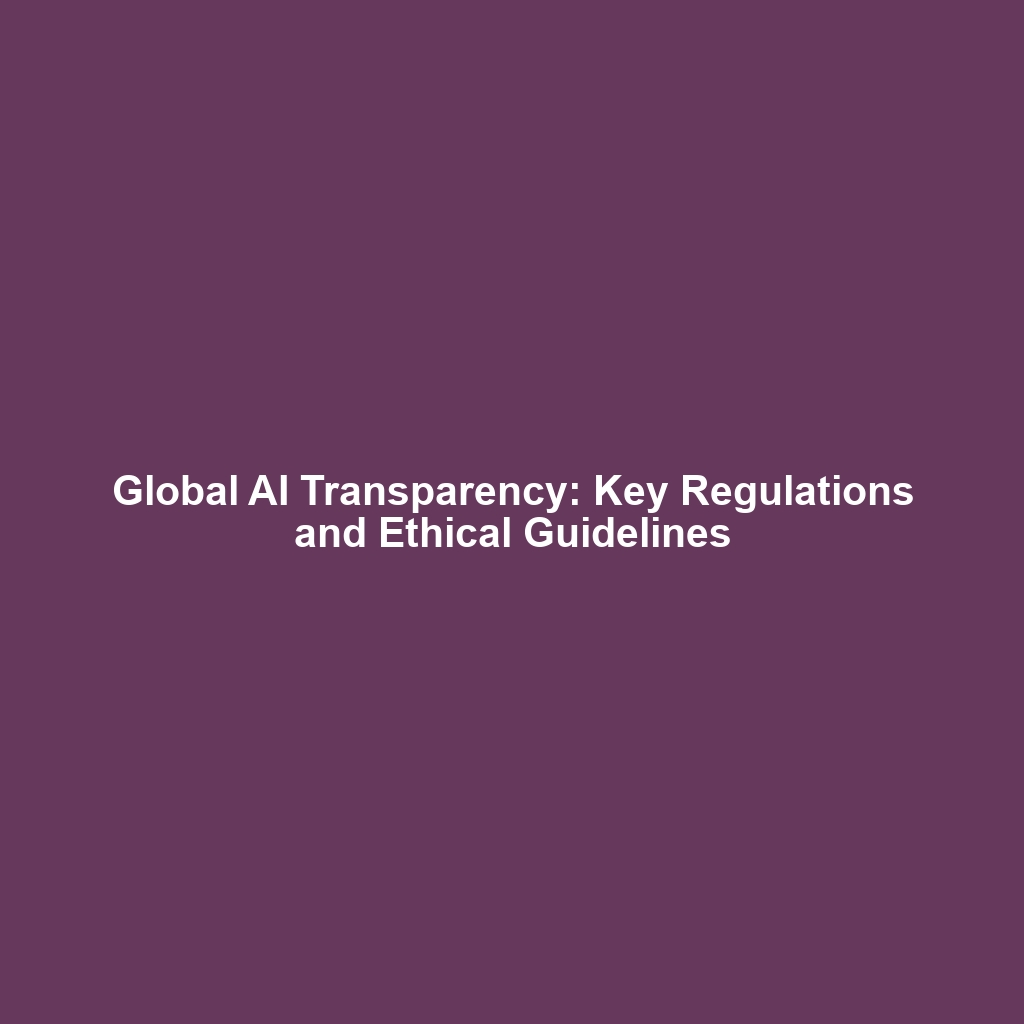Ongoing Efforts to Create Global Standards for CRISPR Research and Application
Introduction
The ongoing efforts to create global standards for CRISPR research and application are critical to the future of CRISPR gene editing. As this powerful gene-editing technology evolves, establishing norms and guidelines is essential to ensure safety, efficacy, and ethical integrity across various fields of research and application. This article delves into the significance of these global standards, highlighting their importance in fostering responsible innovation in the rapidly advancing field of CRISPR gene editing.
Key Concepts
Understanding CRISPR and Its Implications
CRISPR (Clustered Regularly Interspaced Short Palindromic Repeats) technology empowers scientists to modify genetic material with precision. The global standards for CRISPR research focus on the following key concepts:
- Ethical Considerations: Ensuring that CRISPR applications adhere to ethical guidelines.
- Safety Protocols: Establishing safety measures to prevent unintended consequences.
- International Collaboration: Encouraging cooperation among global research institutions.
Applications and Real-World Uses
The ongoing efforts to create global standards for CRISPR research can lead to transformative applications in various fields. Here are a few significant uses:
- Medicine: CRISPR is employed in gene therapy to treat genetic disorders.
- Agriculture: Enhanced crop resilience and traits through targeted gene editing.
- Biotechnology: Producing biofuels and bioproducts with improved efficiency.
These applications illustrate how global standards for CRISPR can optimize the broader impact of CRISPR gene editing.
Current Challenges
Despite the promising advancements, there are several challenges in creating and implementing global standards for CRISPR research and application:
- Lack of uniformity in regulatory frameworks across different countries.
- Challenges in addressing public concerns and ethical implications.
- Difficulty in enforcing compliance with established standards.
Future Research and Innovations
Looking ahead, ongoing efforts to create global standards for CRISPR are likely to foster significant innovations in gene editing. Future research may focus on:
- Development of next-generation CRISPR technologies that increase editing precision.
- Innovations in delivery methods for CRISPR components to enhance treatment efficacy.
- Collaborative international research initiatives aimed at establishing best practices.
These advancements will play a pivotal role in shaping the future landscape of CRISPR gene editing.
Conclusion
In summary, the ongoing efforts to create global standards for CRISPR research and application are paramount for ensuring responsible and effective use of CRISPR gene editing. By addressing current challenges and fostering international collaboration, the scientific community can harness the full potential of this groundbreaking technology. For more on gene editing and its applications, explore our related articles on CRISPR in Medicine and CRISPR in Agriculture.

